.png.transform/rendition-xs/image_image%20(1).png)
A New Generation of Wine Growers
Wine Advocate writer Luis Gutiérrez explains how Spanish wines’ “future lies in the past”, through the stories of the dedication, innovation and traditions of some of Spain's most passionate wine growers, as lovingly profiled in his book The New Vignerons, with photographs by Estanis Núñez.
For hundreds, if not thousands of years, wine has been a subject that incites emotion among both producers and consumers, as both a commodity and a source of joy or at least enjoyment. Given that wine is a living creature – the result of the fermenting of grapes using live yeasts – it is subject to seemingly infinite factors and conditions that all contribute to the end result. In the opinion of this non-practicing but profuse wine-consuming sommelier, this is what makes wine great, as well as endlessly fascinating. Preferences are largely subjective and the styles and characteristics of wine are as diverse as they are inimitable. In a place like Spain where wine culture has been so tightly interwoven with gastronomy and tradition for centuries, each and every bottle has a story behind it – though admittedly some are more captivating than others.
Venerated Spanish wine writer Luis Gutiérrez – whose credits include covering Spain, Chile, Argentina and Jura (France) for Robert Parker's Wine Advocate, co-founding popular Spanish wine site elmundovino.com, and winning the prestigious Spanish National Gastronomy Award for Journalism – has a nose for finding, collecting and relating some of the most captivating of these stories. He does this joyfully and adroitly in his new book, The New Vignerons: A New Generation of Spanish Wine Growers, which was published by Planeta Gastro in Spanish earlier this year, and will soon be released in English.
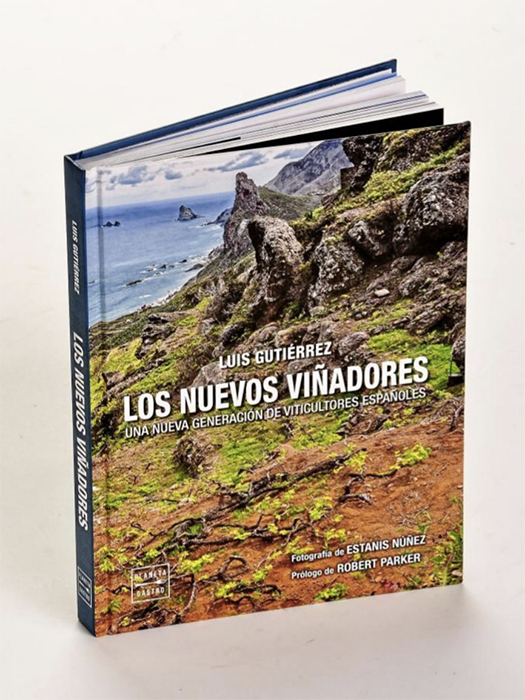
In it, Gutiérrez and his photographer friend and self-proclaimed, fellow “rock ’n’ roller” Estanis Núñez, chronicle the stories of fourteen Spanish vignerones (people who cultivate grapes for winemaking, viñadores in Spanish) located in different corners of Spain. They represent different regions, wines, grapes, backgrounds and even generations, but share a common spirit that infuses every page of this book and brings their stories to life.
As Gutiérrez states in the introduction: “These people represent the great diversity of Spanish wine, and this diverse group of people is united by one single thread that brings their lives together: passion. They have a great passion for wine, for the countryside, for vineyards, for traditions, for what they do, for good food. In short, passion for life. This is the new generation of vignerons currently making some of the best wines in Spain, although some people are not yet aware of it. They represent Spanish wine’s present and future, but are closely linked to its past, using traditions that have gradually been forgotten over the years, traditions that many of us are sure will be the future.”
Back to the Spanish roots
The passion that links these fourteen vignerones, despite their often vastly different wine-making experiences, also manifests in other shared traits. For one, they have restless spirits that have led them to travel the world – often to France but also to faraway places like Argentina and the United States – to speak to producers, work the harvest, and learn as much as possible about wine-making techniques and grape varieties near and far, before returning to their roots and finding their niche as wine growers in Spain.
Their work is interwoven with catchwords and phrases like 100% organic, no chemicals, biodynamic, sustainable, return to tradition, grape stomping, amphorae, recovery of old vines, varieties and techniques; and they all seem to have a clear penchant for discovering and recovering old vineyards and gnarled, ancient vines perched precariously on near-impossible slopes, such as in Tenerife, Ribera Sacra, Priorat or Bierzo.
In this wonderfully evocative book, which Gutiérrez animates throughout with his own buoyant enthusiasm for wine and the people who make it, these vignerones “challenge what’s established, they push the limits, make mistakes, learn and improve. They are hungry and thirsty. Some have already succeeded while others are only just getting started. They make white, rosé, red, sparkling, sweet or fortified wines in any and every price range and style. Wines which strive to capture their landscape, the place they come from and the traditions from their regions. Wines that portray what is written on their labels: a place, perhaps a grape variety and a vintage... Their main aim in life is to portray the uniqueness of their vineyards, villages and landscapes through a bottle of wine. Wine that can transport you back to the time and place it was produced the moment you drink it.”
Although Gutiérrez is the first to admit that this list of fourteen profiles is a personal selection, and that there are “others out there” that fit this bill of “the new generation of Spanish winegrowers”, fans of Spanish wine will undoubtedly recognize some of the names on the list, such as Telmo Rodríguez (Compañía de Vinos Telmo Rodríguez), Sara Pérez and René Barbier (Sara i René Viticultors), Pepe Raventós (Raventós i Blanc), Ricardo Pérez Palacios (Descendientes de J. Palacios) and José María Vicente (Casa Castillo).
The others, if not already familiar to you, will feel like old acquaintances after reading this book. They are Alfonso Torrente, José Ácomngel Martínez, Laura Ramos and Roberto Santana (Envínate); Daniel Gómez Jiménez-Landi and Fernando García (Comando G), Eduardo Ojeda (Equipo Navazos), Iñaki Otegi (Malus Mama), Jorge Monzón (Dominio del Águila), Pablo Calatayud (Celler del Roure), Pedro Rodríguez Pérez (Guímaro), Rafa Bernabé (Rafa Bernabé Vinos Culturales) and Rodrigo Méndez (Forjas del Salnés). It's pretty much guaranteed that you will be left wanting to be best friends with all of them, as well as with the book's author – if only to be invited to their dinner parties and taste all their wines.
As famed American wine guru Robert Parker, who wrote the book's foreword, so ably put it: “In short, this work offers a refreshing voice and a purist’s detailed look at some of the most complicated and compelling wines in the world. Congratulations to Luis Gutiérrez for an extraordinary work that is distinctive, original and will make a fabulous contribution to the literature of fine wine.”
The New Vignerons. A New Generation of Spanish Wine Growers
By Luis Gutiérrez
Photography by Estanis Núñez
Editorial Planeta, 2017
Their main aim in life is to portray the uniqueness of their vineyards, villages and landscapes through a bottle of wine. Wine that can transport you back to the time and place it was produced the moment you drink it.
Adrienne Smith/©ICEX
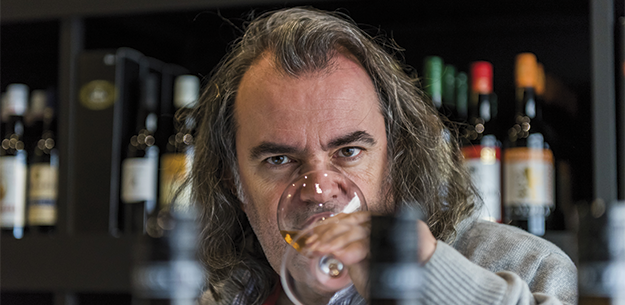
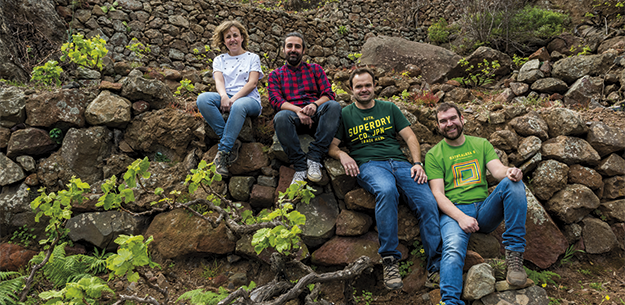
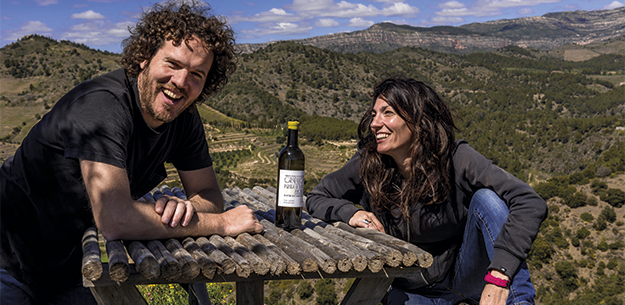
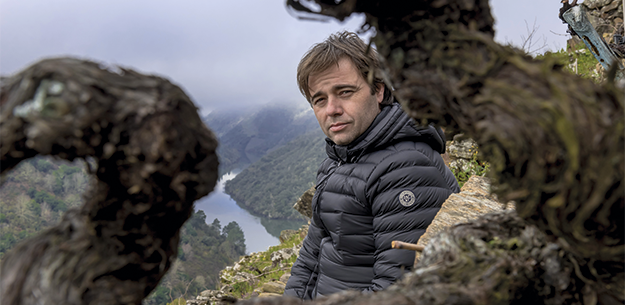
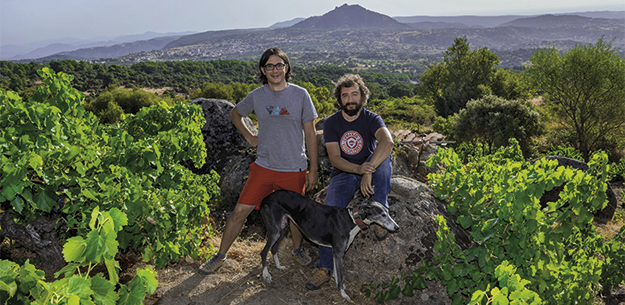
- image1
- image2
- image3
- image4
- image5

